Intellectual sports lovers, to borrow from Martin Amis, are “a beleaguered crew,” fated to be “despised by intellectuals and [sports]-lovers alike.” Yet, across literature, scenes depicting heartstopping goals, impossible tennis shots, thundering bowling strikes, and last-minute baskets abound. Sometimes, these games are only offhand events in characters’ lives. At other moments, they signify something greater—an entry into a protagonist’s interior. The best-written sports scenes combine two joys: your breath catching in your throat as you wait to see who will win, and the emotional pleasure that a good book can bring—access to another’s thoughts as they process the joy of victory or the sorrow of a heartbreaking defeat.
While most of my favorite sports moments deal with the play-by-play action taking place on a court, on a pitch, or in the ocean, some of them find delight in the minutiae of the background, whether in the stands with the spectators or on the field as a star leaves it. The nine books listed below show that reading about sports is in certain ways superior to watching sports: the scene develops slowly, the players’ moves can be explored in multiple dimensions, and every time you flip back the pages, there’s the game again, in easy reach, ready to be reimagined.
The Match, by Romesh Gunesekera
The Match revolves around Sunny, who loved to play cricket growing up in Sri Lanka and the Philippines. As an adult, he’s living in London and going through a midlife crisis, worried that he is losing touch with his son, Mikey, and trying to rediscover himself while bereft of the things that connected him to his earlier life. In May 2002, the Sri Lankan cricket team comes to England to play at the legendary Lord’s Cricket Ground. Sunny goes to watch the second test match between Sri Lanka and England—a game that will end up quelling his disquiet. Over 16 pages, through observant and direct prose, Gunesekera brings forth the sensory details of the match—the batters hitting the ball out of the field as people reach for their beers; the famous Sri Lankan batsman Aravinda de Silva at the crease; the darkening clouds in the sky; and Sunny’s chance meeting with friends from Manila whom he hasn’t seen in decades. One of them is Tina, the subject of his childhood infatuation. As they talk, he detects that she also longs for a life that’s different from the one she has—one much like the one he’s living. When he goes back home, he feels refreshed: Cricket has given him a sense of purpose, and soon he’ll attend a match with the son he worried he had lost.

The Cactus League, by Emily Nemens
The former Paris Review editor’s first book is set in Arizona, where the fictional Los Angeles Lions Major League Baseball team is at spring training. Although packaged as a novel, the book is actually a collection of nine stories linked together by a narrator who discusses the behind-the-scenes lives of the team’s players, coaches, and fans as the Lions prepare for the new season. In her prose, Nemens uncovers the elemental beauty of the sport: “There’s something cathartic about swinging a piece of wood at a hurtling knot of leather and yarn,” she writes. “The reverberations of that rubber center that run up your arms, plugging into your shoulders with a little zing. The sound of it.” But she’s at her best in the chapter devoted to the players’ wives. She describes their hunger for their husbands’ attention, and their sense of duty when they have it—their obligations “to cheer him from the family section of the ballpark … To get him steak on Sunday nights, to rub his feet on Wednesdays,” she writes. The wives’ world revolves around the game, and they demonstrate how even those who don’t play find that “there are many ways to earn one’s keep.”
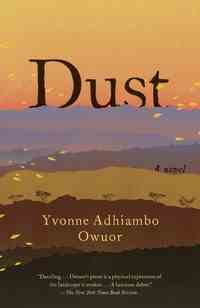
Dust, by Yvonne Adhiambo Owuor
At the start of Owuor’s novel, Moses Ebewesit Odidi Oganda remembers his past life as a star high-school rugby player. He was “the quickest, the trickiest, the best Shifta the Winger,” the team’s clincher, “dancing through adversaries.” His nickname was a reference to a war that had raged in his home of northern Kenya, and also a reference to how he eluded his opponents on the rugby pitch. But while he reminisces, Odidi is in mortal danger: In Owuor’s lyrical prose, this beautifully drawn memory is juxtaposed with Odidi in the present: running full tilt through the streets of Nairobi, trying to escape the police. Even after he’s shot, he still limps forward, trying to get home. As he moves through the city, he recalls the heart-pounding roar of spectators crying “Shifta! Thump, thump! Winger! Thump, thump,” but he can’t dodge these pursuers. The officers chase Odidi down and kill him, and the rest of Dust follows his family—his sister, his father, and his mother, each of them unraveling in their own way—who must deal with the loss of a young man who had so much promise.
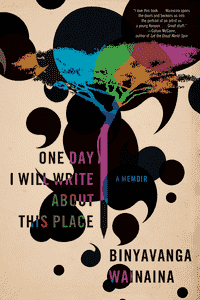
One Day I Will Write About This Place, by Binyavanga Wainaina
Wainaina’s memoir explores his childhood in Nakuru, Kenya, and his struggles with his identity as he grows up in the newly independent nation. The book opens with the writer, 7 years old, playing soccer with his siblings, Jimmy and Ciru. Wainaina describes not only the game but also the sounds that permeate their neighborhood—animals, people, radios. Wainaina is an absentminded child, and even as he plays, he is contemplating the sun and how its beam has splintered into “a thousand tiny suns … all of them spherical, each of them shooting thousands of beams.” Suddenly, the game interrupts again. Jimmy is shouting at him, and, distracted, Wainaina is unable to prevent the ball from hitting him smack in the middle of his face. In Wainaina’s prose, the game is a double salvo: It is a vehicle for his narrator to think, a meditative space—at least until the ball intrudes. At the same time, the three siblings are demonstrating their deep bond, one that will sustain the author through his teenage years and into adulthood, including when Wainaina’s life later falls apart.
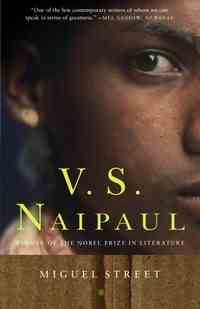
Miguel Street, by V. S. Naipaul
Many wondrous books about cricket have emerged from the Caribbean. In V. S. Naipaul’s motley collection of linked stories about a street in Trinidad based on his childhood memories, we get yet another glimpse of this most colonial of British sports. Twelve boys from Miguel Street and its neighboring blocks go to watch a game at the Oval, a sports stadium in Port of Spain, chaperoned by a man, also from Miguel Street, called Hat. Trinidad is playing Jamaica. Hat is addicted to betting, and tries to make the spectators around him take part in his frivolous gambling. The cricket goes on, but for Naipaul, the game is not the point; Hat is. Throughout Miguel Street, his descriptions of the residents illuminate Trinidad and give him a means of extrapolating on the themes dear to him. Miguel Street was one of Naipaul’s earliest books, written before his fiction became pockmarked with broodiness and depression. Unlike Gunesekera’s characters, who care deeply about the cricket they are watching, Naipaul’s narrator is there to observe intently the people at the match. Here, Naipaul lets in England’s inescapable colonial shadow: After the batter Gerry Gomez gets 150 runs, Hat stands up and shouts, “White people is God, you hear!”

Fever Pitch, by Nick Hornby
Fever Pitch is at its core a tale of woe. Published in 1992, the first year of the English Premier League, it marked an important pivot in how the English public viewed the soccer fan: no longer a buffoonish, violent hooligan, now he was a depressed yet hopeful, urbane, cultured individual. Hornby supports Arsenal Football Club, and when he is 15, he watches a match at Arsenal’s stadium in the regular stands for the first time, graduating from the schoolboys’ section. From his seat, all he can see is a small section of the field; everything else is obscured by the fans around him. When the crowd lurches forward, he’s pushed along; the noise is overwhelming and the group so large that he’s anonymous. He loves it. From there, the book unfolds scene after scene of agony, each funnier and more morose than the last. Being a sports fan in Hornby’s world is essentially an exercise in despondency—any league or tournament is set up so that only one team can ever really win. All the fans of every other team are doomed to lose.

Lolita, by Vladimir Nabokov
Nabokov, one of literature’s greatest stylists, is at the height of his powers in Lolita, and its famous tennis scene, focused on 12-year-old Dolores Haze, is one of his most striking set pieces. “My Lolita had a way of raising her bent left knee at the ample and springy start of the service cycle when there would develop and hang in the sun for a second a vital web of balance between toed foot, pristine armpit, burnished arm and far back-flung racket, as she smiled up with gleaming teeth at the small globe suspended so high in the zenith of the powerful and graceful cosmos she had created for the express purpose of falling upon it with a clean resounding crack of her golden whip,” the narrator, Humbert Humbert, thinks breathlessly. But this indelible image comes to us through the mind of Dolores’s abuser and kidnapper. The reader comes to the awful realization that every gorgeous description of her serve, her control of the ball, and her overhead volley is not merely an appreciation—it is a demonstration of Humbert’s lust for the child. The portrayal of Dolores’s tennis is beautiful on purpose. In Nabokov’s tightening, glittering web, Humbert is seducing the reader in the same way he’s working to abuse Dolores: gaining trust through charm, in pursuit of disgusting designs.
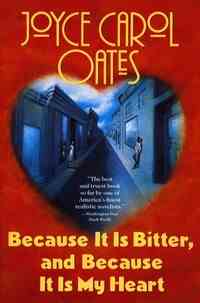
Because It Is Bitter, and Because It Is My Heart, by Joyce Carol Oates
Oates’s novel, set in 1950s upstate New York, is centered on a death. Jinx Fairchild, a Black teenager, intervenes to save a young white girl being attacked and then accidentally kills the perpetrator, a white man. Two years later, Jinx is in his senior year of high school. He plays basketball and is actively recruited by colleges from across the country before his career is brought to a tragic end by an ankle injury. But even in his last game, he is a star, shadowed by an overeager defender, a white boy named Baranczak. Oates describes how Jinx continuously gets the better of Baranczak, his game so “deadpan cool it’s like the fucker isn’t even there.” As Jinx moves to the basket, Baranczak fouls him hard, but not hard enough to stop him. Oates writes, “Jinx Fairchild’s beautifully conditioned body keeps him in the game. Long legs, quick hands and feet, sharp foxy eyes … That zombie look, that glisten to the eyes.” The shining moment doesn’t last: After the game, Jinx’s life unravels. He quits both school and basketball. Years will pass before he and Iris will reconnect, bonded by their experience, but separated by a growing chasm of race, class, and education.
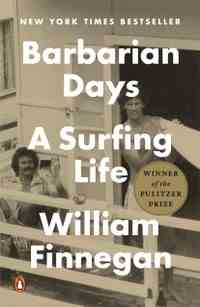
Barbarian Days: A Surfing Life, by William Finnegan
The New Yorker writer first started surfing when he was a child, and his memoir unfolds on beaches in Hawaii, Fiji, Tonga, Australia, Madeira, and New York. No coast is more influential than that of Hawaii, where his family moved when he was in middle school, and where his hobby became a full-on obsession. “In the mags, Hawaiian waves were always big and, in the color shots, ranged from deep mid-ocean blue to a pale, impossible turquoise. The wind was always offshore (blowing from land to sea, ideal for surfing), and the breaks themselves were the Olympian playgrounds of the gods,” he writes. Though the ocean in front of his home is less glamorous, the water becomes his refuge—an odd one, he considers, because surfing contains a base danger that makes it different from other sports. Even with friends, “when the waves got big, or you got into trouble, there never seemed to be anyone around,” he explains. The activity remains his great love, but he understands that he adores something that has the capacity to both save his life and kill him; the ocean is at once “the object of your deepest desire and adoration,” he writes, and “like an uncaring God, endlessly dangerous, powerful beyond measure.”
When you buy a book using a link on this page, we receive a commission. Thank you for supporting The Atlantic.

